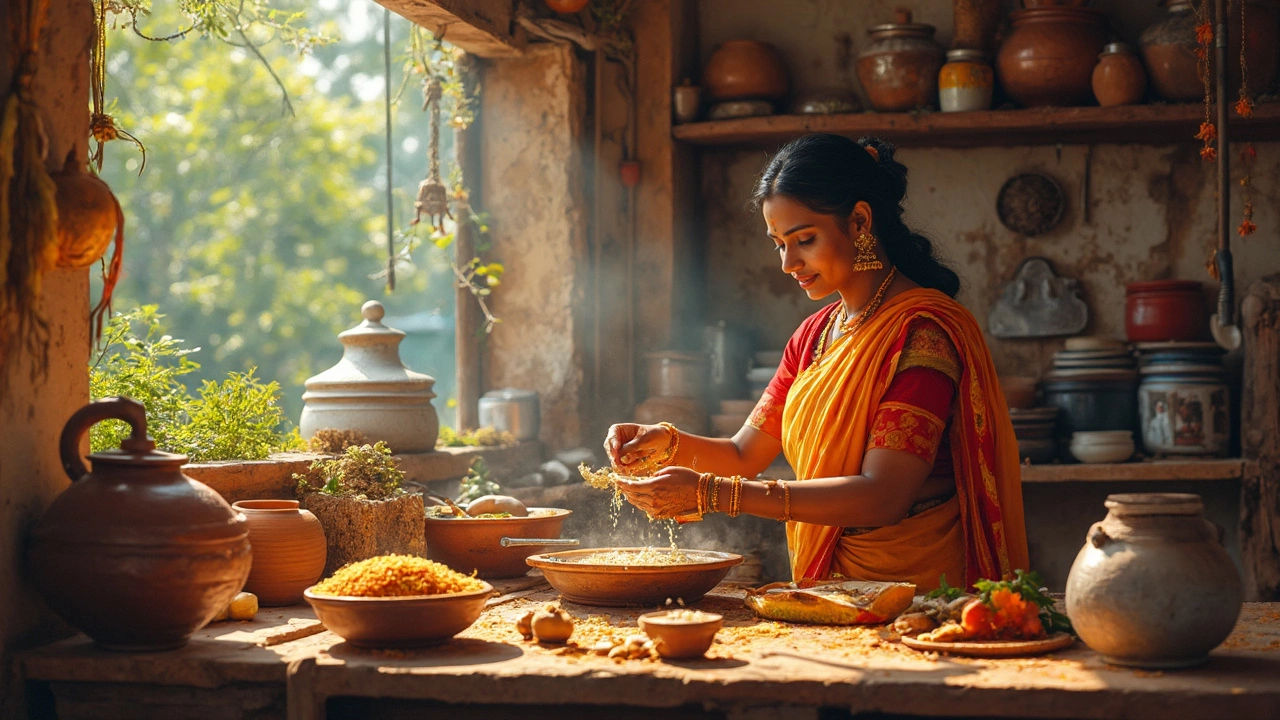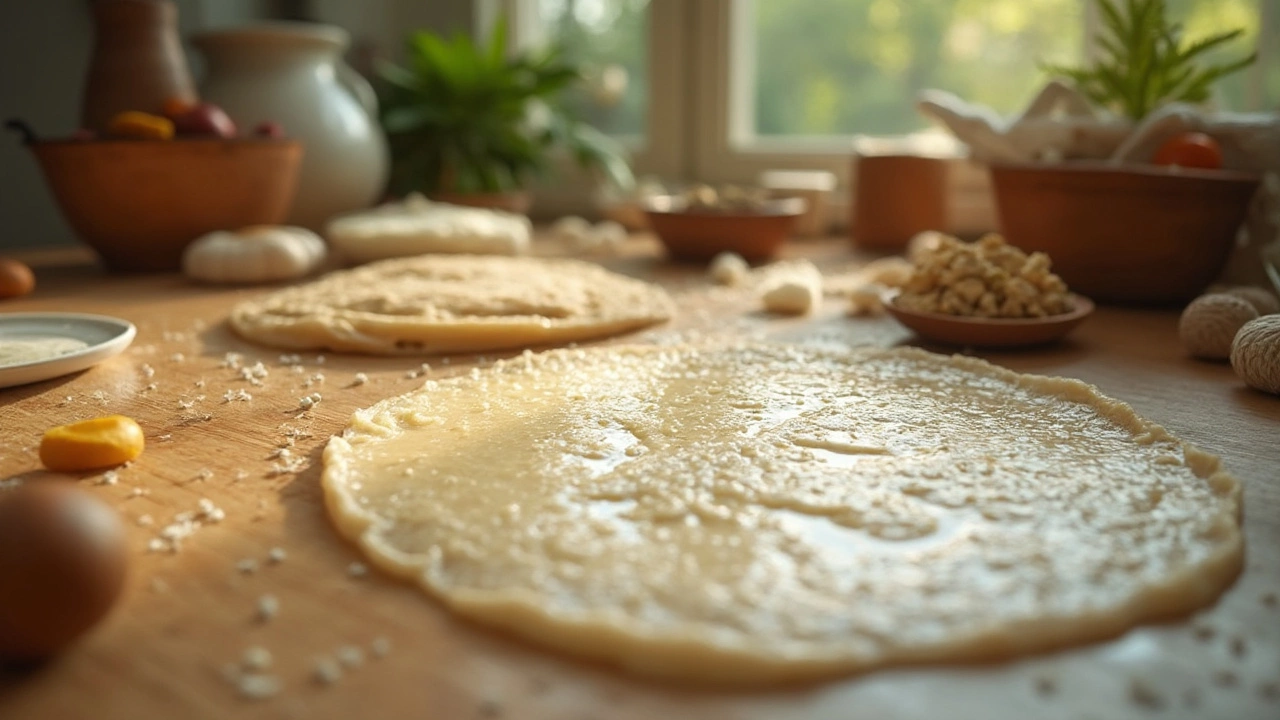Speed Up Dosa Batter Fermentation with These Smart Hacks
 Feb, 12 2025
Feb, 12 2025
Fermenting dosa batter can sometimes feel like you're waiting for paint to dry, right? But what if I told you there are some nifty hacks to speed up the process? Let's cut down the waiting time, so you can enjoy those delicious, crispy dosas sooner.
First things first, let's talk about what makes this magic happen. Fermentation is all about the wild party that yeast and bacteria have in your batter. They feed on sugars and produce gases which make the batter rise and give it that lovely tangy taste.
Now, a critical factor here is temperature. You want the environment to be warm and cozy, like your favorite blanket on a chilly night. Ideally, keep it around 30°C (86°F). If your kitchen is on the cooler side, consider placing the batter in your oven with just the light on—sounds strange, but it works wonders!
- Understanding Fermentation Basics
- Ideal Temperature for Quick Fermentation
- Unusual Ingredients to Boost Fermentation
- Kitchen Tweaks for Faster Results
Understanding Fermentation Basics
Fermentation might sound like a science experiment, but trust me—it's really the heart and soul of making perfect dosa batter. So what’s happening inside that bowl? It's essentially a party where yeast and friendly bacteria munch on the sugars in rice and dal, producing gases and acids as byproducts.
The Role of Yeast and Bacteria
These tiny microorganisms are the heroes of the fermentation process. Natural yeast and lactic acid bacteria live on the surface of grains and legumes. When you soak and grind them, these microorganisms mix in and start doing their thing. It’s their enzymes that break down the complex sugars, making the batter rise and develop that signature tangy flavor in dosas.
The Importance of Time and Temperature
Time acts as the main ingredient in fermentation. Typically, dosa batter needs about 8 to 12 hours to achieve prime fermentation. But temperature is the VIP guest here—keeping the batter warm can speed things up significantly. If you're in a chilly spot, use tricks like wrapping the container in a thick towel or preheating your oven and turning it off, then placing the batter inside with just the oven light on.
Factors Affecting Fermentation
Got your batter turning out flat sometimes? Here's a quick checklist of what might be going wrong:
- Water Quality: Surprisingly, the kind of water you use can make a difference. Hard water can slow down fermentation.
- Ingredient Ratio: Sticking to a traditional 3:1 rice to dal ratio usually works best.
- Salt Addition: There's ongoing debate—but adding salt, after fermentation, often yields better results.
These basics ensure that fermentation gets off to a good start, setting the stage for a seamless, quicker process when you add in those fermentation hacks.
Ideal Temperature for Quick Fermentation
Temperature plays a crucial role if you're looking to speed up the fermentation of your dosa batter. The optimal range for the fastest fermentation is about 30°C (86°F). Too cool, and the microorganisms slow down; too hot, and you might kill them altogether. So, aiming for this sweet spot is key.
Tips for Achieving the Perfect Temperature
Your kitchen environment can often be cooler than ideal, especially during winter. Here’s how to tackle that:
- Oven Method: Pop the bowl of batter in your oven with just the light on. The warmth from the bulb is usually enough to create a cozy environment for fermentation without overheating.
- Insulated Bottles: Pour hot water into a couple of bottles and place these next to your batter container, creating a warm atmosphere.
- Warm Spots: Find the warmest corner of your kitchen—sometimes, placing it on top of your refrigerator or near a sunny window can do the trick.
Managing Temperature Fluctuations
Temperature may not be constant, so keeping an eye (or a thermometer) on it can save you some grief. Fluctuations are common, but minimizing them keeps your fermentation on track. You can try wrapping your batter bowl in a thick towel or shawl to maintain that warm temp once you've got it right.
Interesting Tidbits
Did you know that at 30°C, your batter can ferment perfectly in about 8-10 hours? It’s like watching a slow movie where the end result is totally worth it. This is especially handy if you're planning to make dosas for breakfast.

Unusual Ingredients to Boost Fermentation
Ever thought of adding a little something extra to your dosa batter to give that fermentation a gentle nudge? It's true; there are some quirky but effective ingredients that can make a big difference.
First up, let's talk about fenugreek seeds (also known as methi seeds). Not only do they add a unique flavor, but they also work as a natural fermenting agent. Just a small teaspoon soaked with your rice and urad dal can speed things along.
“Adding a handful of soaked poha or flattened rice not only boosts fermentation but also gives dosas a softer texture,” says renowned chef Sneha Nair.
Another great addition is a small amount of yogurt. It's packed with lactic acid bacteria which can kickstart the fermenting process. Throw in about a tablespoon per cup of batter.
Add a Little Sugary Bonus
Don't underestimate the power of a pinch of sugar. Sugar acts as a superfood for the yeast and bacteria, helping them multiply faster. But keep it minimal–just a teaspoon is enough.
Exploring Even More Options
If you want to push experimentations, try adding a dash of apple cider vinegar. While unconventional, it can sometimes give the microbes the little nudge they need to get going.
Here's a quick reference table with these booster ingredients:
| Ingredient | Amount to Use | Effect |
|---|---|---|
| Fenugreek Seeds | 1 tsp | Natural fermentation boost |
| Yogurt | 1 tbsp per cup | Kickstarts lactic fermentation |
| Sugar | 1 tsp | Feeds yeast, fast results |
| Apple Cider Vinegar | A dash | Boosts microbial activity |
| Poha | A handful | Softens texture |
Try these quirky additions, and you'll likely see your dosa batter fermenting faster and better. It's all about giving those wee microbes the best conditions to thrive – and these ingredients could be your secret weapon.
Kitchen Tweaks for Faster Results
Want to get your dosa batter ready in a jiffy? Your kitchen could be holding the secret to faster fermentation. Let's peek into some common appliances and settings that can double-time your batter without breaking a sweat.
Oven Magic
Ever thought of your oven as a fermentation assistant? Keep the batter in the oven with only the light on. The slight warmth is often perfect for activating the wild yeast in your batter, speeding up that fermentation dance.
Fridge as a Last Resort
If you're in a really warm climate, things can go sideways pretty fast. In this case, after a quick start at room temperature, pop the batter in the fridge for a slo-mo fermentation. This isn’t necessarily faster for the short term but avoids over-fermentation, giving you batter that's still good to go.
Microwave Trick
Another quirky trick is using your microwave. No, don't turn it on! Load up a cup of water, heat it until it's steaming, and then shove that batter right in afterward (yes, with the microwave off). The steam creates a warm and humid environment—perfect for a speedy ferment.
The Pantry Power Play
Your pantry can be more than a snack hub. If it's insulated and away from temperature fluctuations, it could become your new batter haven. Keep it dark and switch on a small incandescent bulb inside for just enough heat.
Playing around with these ideas might just have you flipping those dosas faster than you thought possible. Go on, give it a shot, and never wait in agony for breakfast again!